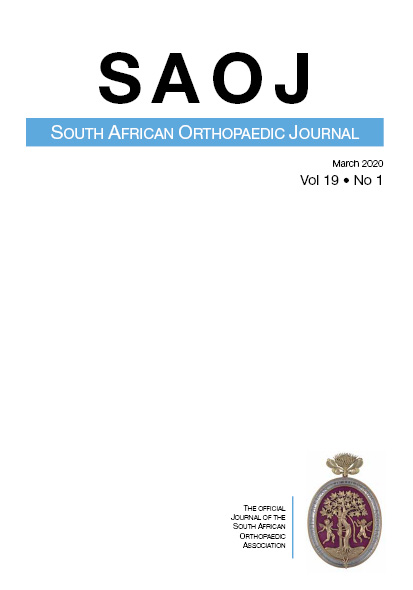18F-FDG PET/CT as a modality for the evaluation of persisting raised infective markers in patients with spinal tuberculosis
Keywords:
PET/CT, spinal tuberculosis, Gene Xpert, histology, tuberculosisAbstract
Aims: The aim of the study was to investigate the differences in participant characteristics between positive and negative, positron emission tomography with 2-deoxy-2-[fluorine-18]fluoro-D-glucose integrated with computed tomography (18F-FDG PET/CT) activity at the spinal tuberculosis (TB) site following 12 months of the appropriate chemotherapy therapy for spinal TB. A secondary aim of the study was to determine whether erythrocyte sedimentation rate (ESR) levels could be used as a reliable marker of TB activity and/or treatment success of spinal TB, especially in a high HIV-positive population.
Patients and methods: All patients who were treated for spinal TB and underwent an 18F-FDG PET/CT scan were considered for inclusion. PET/CT positive patients underwent a spinal biopsy which was sent for microscopy, Gram staining, Gene Xpert (GXP) polymerase chain reaction (PCR) and histology. Patients in the PET/CT positive group underwent a repeat MRI scan and biopsy at the completion of treatment to investigate the potential presence of resistance or ongoing active spinal TB.
Results: A total of 18 patients were included in the study: five patients were allocated to the PET/CT positive group and 13 to the PET/CT negative group. The PET/CT negative group was significantly older (p=0.016) and had significantly fewer TB-infected vertebrae (p=0.010) than the PET/CT positive group. Two patients, one in each group, were found to have drug-resistant spinal TB. At the 12-month follow-up visit, two patients (40%) in the PET/CT positive group and three patients (30%) in the PET/CT negative group were still complaining of back pain. All smear microscopy results of the PET/CT positive patients who underwent a repeat biopsy were negative after the conclusion of treatment; culture results (n=4/4) were also negative. GXP PCR results were positive in four and negative in one case. Only one of four samples showed classic TB signs on histology.
Conclusion: This study is the first to report on biopsies done from a PET/CT positive site, after 12 months of anti-tubercular treatment. It is not unlikely that PET/CT is over-sensitive and can show metabolic activity in areas of sterile inflammation, and future studies are necessary to evaluate this.
Level of evidence: Level 3

